Printable Medical Forms, Letters & Sheets
Free Medical Forms & Templates

Doctor’s Note for Travel Cancellation
A doctor’s note for travel cancellation is a document prepared by a responsible doctor or healthcare professional for his patient so that the latter can submit it to his/her employer. In this note, the doctor certifies that the employee is under his professional care and he does not deem the employee medically fit for traveling. In addition, he requests the employer to spare his patient and cancel his travel arrangements.
Employees might need to request their employers for travel cancellation for various reasons, such as medical issues, client meetings, family commitments, deaths, emergencies, etc. If the travel plans need to be crossed out due to the medical problems of an employee, the employer might seek a doctor’s note, as it is a valid document prepared by a responsible and professional person. In addition, the employee may include the doctor’s note with the travel cancellation application to make his request worth considering and acceptable.
It must be a comprehensive document
A doctor’s note for travel cancellation may be a very short and concise document, or it may be a lengthy one if the medical issue involved is critical and requires a detailed explanation. However, the doctor cannot share any information without the consent of his patient.
The general details included in this note are:
- Details of the employee.
- Details of the doctor or healthcare professional.
- Certification that the employee is the doctor’s patient.
- The employee’s medical issue and its details (what the patient has allowed sharing).
- Explain why he cannot travel and what has been prescribed.
- Request for travel cancellation.
- Indicate the time period for which traveling is not allowed, if possible.
- Request to the employer for cooperation.
- Indicate openness to communication or information provision.
- Salutations and signature.
The doctor’s note is either prepared on the doctor’s personal and professional letterhead or the healthcare facility’s letterhead. The paper is then duly signed and stamped by the doctor to make it a valid and authentic document.
The doctor’s note is kept as a record in the employee file and can be used for any future references. This indicates that it is a formal and professional document of communication that should be prepared carefully. Furthermore, the employee should not submit a fake doctor’s note, which is a common practice, because if the employee gets caught by the employer or the doctor, he might have to face serious consequences.
Sample Doctor’s Note for Travel Cancellation
To whom it may concern,
Please excuse Mr. James Wilson from traveling on the airplane on 12 th July 2031.
He is not fit to travel for at least the next six months, i.e. until December 2031. After December, I can only allow traveling after reviewing his latest reports at that time.
Mr. Wilson has been under my treatment since the start of 2019 and is suffering from backache and spinal problems. I have often prescribed him bed rest and straight sitting. As for traveling, especially by air, he is not allowed, as per my prescription. The seats of the plane are very uncomfortable and the air pressure, as well as the long hours, might affect his vertebrae. Traveling would deteriorate his back issues and he might become bedbound.
Kindly, cooperate and spare him from any sort of traveling. If you need any more information, you can contact me at [contact].
Dr. Sarah William.
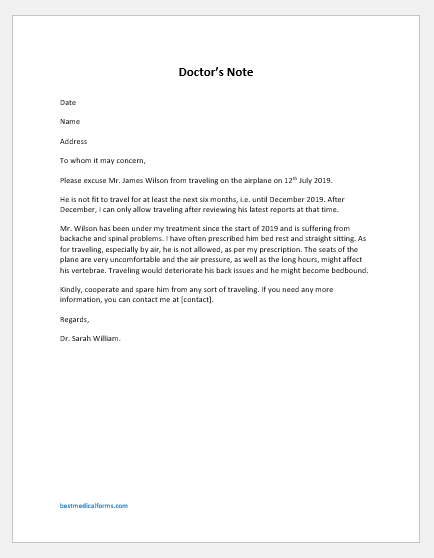
- Leave Message to Boss due to Injury or Accident
- Leave Message to Boss due to Infectious Disease
- Letter to Team Explaining Mental Health Illness
- Letter To School To Request Mental Health Absence For Child
- Letter to Event Organizer Requesting Mental Health Excuse
- Letter to Teacher Explaining Mental Health Absence
- Pain Diary Worksheet Template
- Stomach ache Excuse Note for One Day
- Pregnancy Note to Employer
- Letter to Employer Requesting Mental Health Leave
- Next story Dental Reimbursement Letter
- Previous story Return to Work Doctor Note
You may also like...
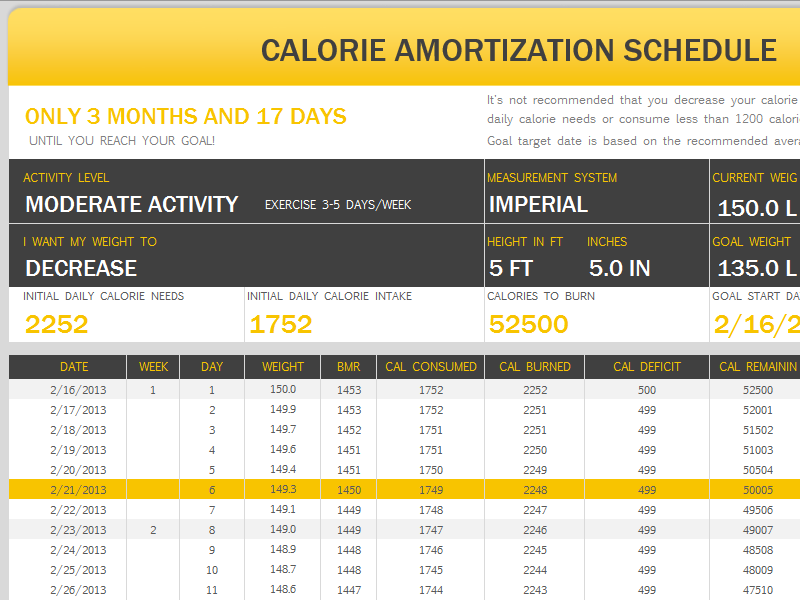
Calorie Amortization Schedule
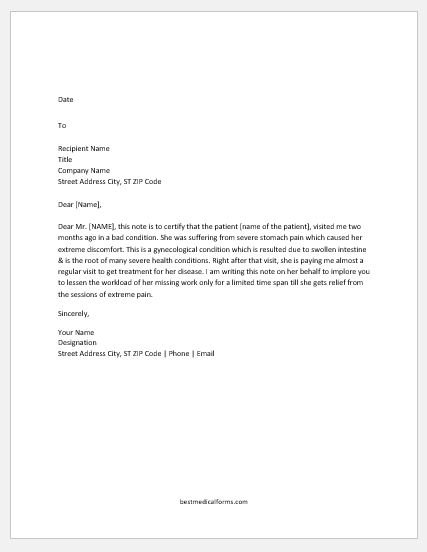
Doctor Excuse Notes for Work
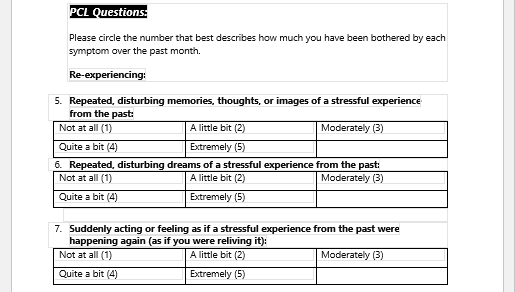
Forms Used for Mental Health Assessment
Recent posts.
- Forms Commonly Used by Old Age Homes
- Medical Treatment Consent Form
- Home Exercise Program Worksheet
- Letter to School Requesting Mental Health Services
- Letter to Family Explaining Mental Health Journey
- Medical Forms
- Medical Templates
- Official Medical Letters
- Sample Forms
- Schedule Forms
Careful packing: Where your prescription could get you in trouble

When traveling, especially internationally, sometimes the pre-travel checklist feels like it's a mile long.
Not only do you need to do the obvious things like making sure your passport is still valid and verifying whether you need a visa , but you may also need to seek written approval from a country's government to bring certain medications abroad.
I must admit I didn't realize this was a thing until one of my TPG colleagues flagged this requirement she discovered when packing for her family's trip to Japan . Japan is just one country that strongly regulates travel with medicine.
Here's what you need to know about taking your medications to a variety of popular destinations that regulate travel with medicine.
Japan requires advance permission to enter with a variety of medications, including many common over-the-counter medicines openly sold in U.S. drugstores.
The Japanese government labels such drugs as "controlled substances," divided into six categories, including stimulants. Travelers who need these medications must apply for a "Yunyu Kakunin-sho" (or an import certificate), which should be declared and submitted to customs when entering.
Up to two months of approved over-the-counter medicines and four months of vitamins are permitted. Note that disposable contact lenses are also monitored, and those with a two-month supply or greater require an import certificate.
Travelers should also bring a copy of their prescription, along with a note stating the purpose of the medicine, if applicable.
Type of medicine : All medications containing stimulants, including over-the-counter allergy and sinus medications, plus Adderall listed here How to apply : Apply online for an import certificate through the Japanese Ministry of Health, Labour and Welfare Amount of medicine : Up to one month of allowable over-the-counter medication and up to a two-month supply of allowable vitamins Cost : N/A Processing time : N/A More information : Japanese Ministry of Health, Labour and Welfare ; Japan's Application for Import Confirmation ; Consulate-General of Japan in Seattle ; Japan Narcotics Control Department
Other Asian countries
- Thailand : Certain medications, including those containing codeine and drugs to treat ADHD, require a permit issued by the Ministry of Public Health .
- Hong Kong : Certain medications — including those with stimulants, such as sleeping pills and anxiety medication — require an import license and import certificate issued by the Department of Health .
- Singapore : Certain medications, including anxiety medication, sleeping pills and painkillers, require advance approval, per the Singapore Health Sciences Authority .
- China : Per various tourist organizations, including China Highlights , visitors must "provide written documentation from a medical institution to prove the necessity of the medicine," including sleeping aids, ADHD medication and painkillers.
- South Korea : Medicines classified as "narcotics" require advance approval via the Korean Food and Drug Administration .
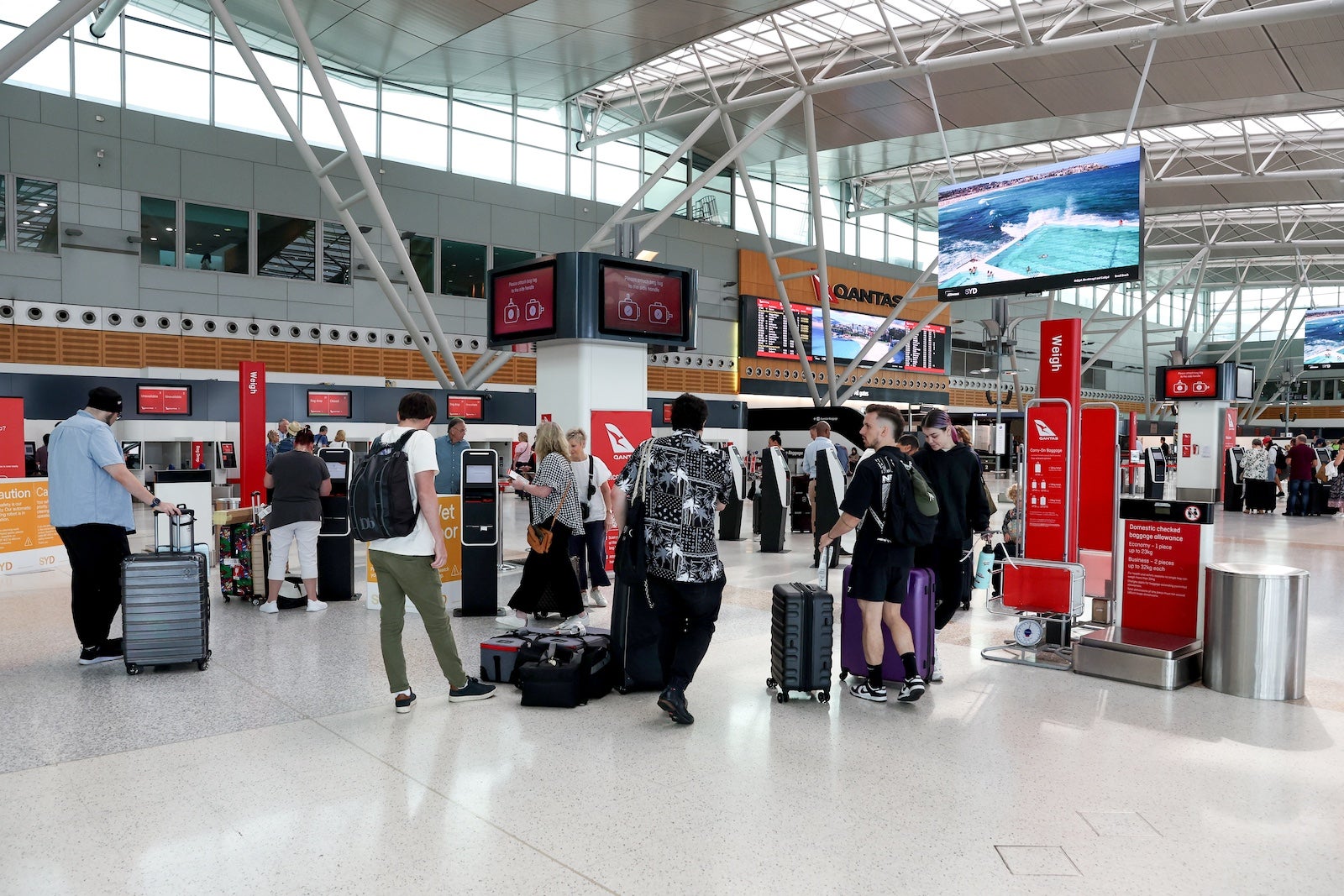
Australia has a traveler's exemption for persons traveling to Australia to enter with certain prescribed medications, including Adderall. The Australian Government Department of Health and Aged Care directs travelers to either secure a prescription for the medicines they're carrying or seek a letter from their doctor specifying that the medicines they've been prescribed are for their personal use.
"Your doctor's letter must specify the name of the medicine and dosage. Ensure the medication remains in its original packaging with the dispensing label intact," per the Australian Government Department of Health and Aged Care. "This will assist with identifying each substance at the border. Be ready to declare all medication to the Australian Border Force upon arrival."
Type of medicine : Certain prescription medicines, including Adderall How to apply : N/A Amount of medicine : Up to three months' worth of medicine and medical devices Cost : N/A Processing time : N/A More information : Australian Government Department of Health and Aged Care
United Arab Emirates
Travelers to the UAE must apply for approval to carry controlled medication into the country. All other medication, including prescriptions for uncontrolled medication and over-the-counter medication, does not need prior approval. However, the government urges travelers to carry documentation for all medicine, including documentation explaining medical reasons for taking the medication and any other supporting documents.
To determine if your prescription is considered controlled, check with your doctor.
Type of medicine : Controlled medicine, including narcotics and psychotropics How to apply : Online through the United Arab Emirates Ministry of Health & Prevention Length of time : Maximum three-month supply for narcotics and controlled medicines; six-month supply for prescriptions Cost : Free Processing time : One business day More information : United Arab Emirates Ministry of Health & Prevention
Europe and Schengen countries

The Schengen Area includes most European Union countries. If you are traveling to this area, a Schengen certification for medicines that fall under the Opium Act, including narcotics, is required. Specific medicines bound by the act include strong painkillers, sleeping pills, anxiety drugs, ADHD medication and medical cannabis.
Since specific requirements vary by each country within the Schengen Area, you should contact the appropriate health agency of the country in question. For example, the Netherlands Ministry of Health, Welfare and Sport provides instructions for travelers to the Netherlands to help obtain this certificate, including a link to the application and a list of prohibited medications that fall under the aforementioned Opium Act. Information can also be found via the relevant U.S. Embassy and or Consulate .
Also note that some countries, including Greece , require further authorization for specific medicines, such as codeine without a prescription, via Greece's National Organization for Medicines.
Bottom line
Regardless of where you are traveling, it's a good idea to keep medicines in their original prescription packaging; this shows the purpose of the medicine and that it's for you and only you. As noted, it's also helpful to pack any accompanying doctor's note.
Related reading:
- Everything you need to know about State Department travel advisories
- When and how to renew your passport, according to the State Department
- I stayed at an IHG voco hotel for the first time — here are 7 reasons I'd stay again
- Everything you need to know about traveling with medication
- The best travel insurance policies and providers
You are using an outdated browser. Upgrade your browser today or install Google Chrome Frame to better experience this site.
Traveling Abroad with Medicine

Many international travelers carry medicines with them to treat acute or chronic health problems. However, each country has its own laws related to medicines. Medicines that are commonly prescribed or available over the counter in the United States might be unlicensed or considered controlled substances in other countries. While rules vary by country, there can be serious consequences if you violate the laws at your destination. The consequences may include:
- Authorities taking away your medicine
- Penalties, including jail or prison time
Before Travel
Check with your destination’s embassy and embassies of countries that you have layovers in to make sure your medicines are permitted.
- Many countries allow a 30-day supply of certain medicines, but also require the traveler to carry a prescription or a medical certificate from their health care provider.
- If your medicine is not allowed at your destination, talk with your health care provider about alternatives and have them write a letter describing your condition and the treatment plan.
- You may also want to check the International Narcotics Control Board website that provides general information about narcotics and controlled substances, for countries that have information available, for travelers.
Check CDC’s destination pages for travel health information . Check CDC’s webpage for your destination to see what vaccines or medicines you may need and what diseases or health risks are a concern at your destination.
Make an appointment with your healthcare provider or a travel health specialist that takes place at least one month before you leave. They can help you get destination-specific vaccines, medicines, and information. Discussing your health concerns, itinerary, and planned activities with your provider allows them to give more specific advice and recommendations.
- If you plan to be gone for more than 30 days, talk to your health care provider about how you can get enough medicine for your trip. Some insurance companies will only pay for a 30-day supply at a time.
- If you are a traveling to a different time zone, ask your health care provider about any changes to taking your medicine. Medicines should be taken according to the time since your last dose, not the local time of day.
- Find out how to safely store your medicine while traveling and check whether it needs refrigeration. Keep in mind that extreme temperatures can reduce the effectiveness of many medicines.
Prepare a travel health kit with items you may need, especially those items that may be difficult to find at your destination. Include your prescription and over-the-counter medicines in your travel health kit and take enough to last your entire trip, plus extra in case of travel delays. Pack medications in a carry on in case your luggage is lost or delayed.
- Keep medicines in their original, labeled containers. Ensure that they are clearly labeled with your full name, health care provider’s name, generic and brand name, and exact dosage.
- Bring copies of all written prescriptions, including the generic names for medicines. Leave a copy of your prescriptions at home with a friend or relative in case you lose your copy or need an emergency refill.
- Ask your prescribing health care provider for a note if you use controlled substances, or injectable medicines, such as EpiPens and insulin.
Buying Medicine Abroad
Counterfeit drugs are common in some countries, so only use medicine you bring from home and make sure to pack enough for the duration of your trip, plus extra in case of travel delays. If you must buy drugs during your trip in an emergency, see CDC’s Counterfeit Drugs page.
More Information
- CDC Yellow Book: Avoiding Poorly Regulated Medicines
- Travel Smartly with Prescription Medications (US Department of State)
- Traveling with Prescription Medications (US Food and Drug Administration)
File Formats Help:
- Adobe PDF file
- Microsoft PowerPoint file
- Microsoft Word file
- Microsoft Excel file
- Audio/Video file
- Apple Quicktime file
- RealPlayer file
- Zip Archive file
Exit Notification / Disclaimer Policy
- The Centers for Disease Control and Prevention (CDC) cannot attest to the accuracy of a non-federal website.
- Linking to a non-federal website does not constitute an endorsement by CDC or any of its employees of the sponsors or the information and products presented on the website.
- You will be subject to the destination website's privacy policy when you follow the link.
- CDC is not responsible for Section 508 compliance (accessibility) on other federal or private website.

- Mechanism of Action of Endocrine Drugs
- History of hormones
- Landmark Diabetes and Endocrinology Trials
- Calculators in Endocrinology and Diabetes Care
- Endocrinology Practice Guidelines
- Endocrine System Mnemonics
- Endocrine Journal Club
- Dynamic Tests in Endocrinology
- Endocrine Question Bank
- Endocrine Board Review (Guideline Quizzes)
- Histology of Endocrine Glands
- Endocrinology Fellowship Resources
- Internal Medicine Notes
- Welcome to MyEndoConsult
- How To Search
- How to Cite Us
- The MyEndoConsult Education Team
- FAQ Section
- Contribute An Article
- Short Stories in Endocrinology
- Medical Art
- Board Review
- Forgot Your Password
- Access Locked (Contact Admin)
- Upload Your Article
Diabetes Travel Letter
If you have diabetes, it’s important to have a travel letter from your doctor. This letter will help you if you need medical care while you’re away from home.
The letter should include the following: Your diagnosis of diabetes, your current treatment plan, the name and contact information for your doctor or other health care provider, and any special instructions for your care while traveling.
Having a travel letter can help ensure that you get the care you need while you’re away from home. Be sure to pack it in your carry-on luggage so that it’s easily accessible if you need it.

Sample diabetes letter
The above-named patient has diabetes and is required to manage blood glucose levels daily with insulin via an insulin pump or injections of insulin. Self-blood glucose monitoring is done several times a day using a glucose meter or by a continuous sensor system.
The following supplies need to be carried at all times in order to take care of their diabetes:
- insulin pump
- infusion sets
- glucose meter
- glucose strips
- lancing device with lancets
- insulin vials, syringes
- insulin pens , pen needles
- glucagon emergency kit
- food/glucose tablets to treat low blood sugar
- alcohol swabs
- If continuous glucose sensor is used, transmitter and sensors
This patient’s insulin pump , and continuous sensor system if applicable, cannot be exposed to magnetic or x-ray equipment, including a full body scanner. Please have these devices hand-checked by TSA personnel.
If you have any questions or in case of an emergency , call xxx-xxx-xxxx and ask to speak to the endocrinologist on call.
My Diabetes Team
The opinions expressed here represent the views of a practicing hormone specialist (endocrinologist) and must not substitute the advice of your health care provider. This blog post is written for a non-medical audience interested in learning more about hormonal disorders. The author has no commercial conflicts of interest to declare. Also, read our privacy policy.
Need a sample letter?
Download a pdf version.
Kindly Let Us Know If This Was helpful? Thank You!


About the Author MyEndoConsult
The MyEndoconsult Team. A group of physicians dedicated to endocrinology and internal medicine education.
Session expired
Please log in again. The login page will open in a new tab. After logging in you can close it and return to this page.
Accessibility
Readable experience, visually pleasing experience, easy orientation.
My Endo Consult Accessibility Statement
Accessibility Statement

- myendoconsult.com
- April 14, 2024
Compliance status
We firmly believe that the internet should be available and accessible to anyone, and are committed to providing a website that is accessible to the widest possible audience, regardless of circumstance and ability.
To fulfill this, we aim to adhere as strictly as possible to the World Wide Web Consortium’s (W3C) Web Content Accessibility Guidelines 2.1 (WCAG 2.1) at the AA level. These guidelines explain how to make web content accessible to people with a wide array of disabilities. Complying with those guidelines helps us ensure that the website is accessible to all people: blind people, people with motor impairments, visual impairment, cognitive disabilities, and more.
This website utilizes various technologies that are meant to make it as accessible as possible at all times. We utilize an accessibility interface that allows persons with specific disabilities to adjust the website’s UI (user interface) and design it to their personal needs.
Additionally, the website utilizes an AI-based application that runs in the background and optimizes its accessibility level constantly. This application remediates the website’s HTML, adapts Its functionality and behavior for screen-readers used by the blind users, and for keyboard functions used by individuals with motor impairments.
If you’ve found a malfunction or have ideas for improvement, we’ll be happy to hear from you. You can reach out to the website’s operators by using the following email [email protected]
Screen-reader and keyboard navigation
Our website implements the ARIA attributes (Accessible Rich Internet Applications) technique, alongside various different behavioral changes, to ensure blind users visiting with screen-readers are able to read, comprehend, and enjoy the website’s functions. As soon as a user with a screen-reader enters your site, they immediately receive a prompt to enter the Screen-Reader Profile so they can browse and operate your site effectively. Here’s how our website covers some of the most important screen-reader requirements, alongside console screenshots of code examples:
Screen-reader optimization: we run a background process that learns the website’s components from top to bottom, to ensure ongoing compliance even when updating the website. In this process, we provide screen-readers with meaningful data using the ARIA set of attributes. For example, we provide accurate form labels; descriptions for actionable icons (social media icons, search icons, cart icons, etc.); validation guidance for form inputs; element roles such as buttons, menus, modal dialogues (popups), and others. Additionally, the background process scans all of the website’s images and provides an accurate and meaningful image-object-recognition-based description as an ALT (alternate text) tag for images that are not described. It will also extract texts that are embedded within the image, using an OCR (optical character recognition) technology. To turn on screen-reader adjustments at any time, users need only to press the Alt+1 keyboard combination. Screen-reader users also get automatic announcements to turn the Screen-reader mode on as soon as they enter the website.
These adjustments are compatible with all popular screen readers, including JAWS and NVDA.
Keyboard navigation optimization: The background process also adjusts the website’s HTML, and adds various behaviors using JavaScript code to make the website operable by the keyboard. This includes the ability to navigate the website using the Tab and Shift+Tab keys, operate dropdowns with the arrow keys, close them with Esc, trigger buttons and links using the Enter key, navigate between radio and checkbox elements using the arrow keys, and fill them in with the Spacebar or Enter key.Additionally, keyboard users will find quick-navigation and content-skip menus, available at any time by clicking Alt+1, or as the first elements of the site while navigating with the keyboard. The background process also handles triggered popups by moving the keyboard focus towards them as soon as they appear, and not allow the focus drift outside of it.
Users can also use shortcuts such as “M” (menus), “H” (headings), “F” (forms), “B” (buttons), and “G” (graphics) to jump to specific elements.
Disability profiles supported in our website
- Epilepsy Safe Mode: this profile enables people with epilepsy to use the website safely by eliminating the risk of seizures that result from flashing or blinking animations and risky color combinations.
- Visually Impaired Mode: this mode adjusts the website for the convenience of users with visual impairments such as Degrading Eyesight, Tunnel Vision, Cataract, Glaucoma, and others.
- Cognitive Disability Mode: this mode provides different assistive options to help users with cognitive impairments such as Dyslexia, Autism, CVA, and others, to focus on the essential elements of the website more easily.
- ADHD Friendly Mode: this mode helps users with ADHD and Neurodevelopmental disorders to read, browse, and focus on the main website elements more easily while significantly reducing distractions.
- Blindness Mode: this mode configures the website to be compatible with screen-readers such as JAWS, NVDA, VoiceOver, and TalkBack. A screen-reader is software for blind users that is installed on a computer and smartphone, and websites must be compatible with it.
- Keyboard Navigation Profile (Motor-Impaired): this profile enables motor-impaired persons to operate the website using the keyboard Tab, Shift+Tab, and the Enter keys. Users can also use shortcuts such as “M” (menus), “H” (headings), “F” (forms), “B” (buttons), and “G” (graphics) to jump to specific elements.
Additional UI, design, and readability adjustments
- Font adjustments – users, can increase and decrease its size, change its family (type), adjust the spacing, alignment, line height, and more.
- Color adjustments – users can select various color contrast profiles such as light, dark, inverted, and monochrome. Additionally, users can swap color schemes of titles, texts, and backgrounds, with over 7 different coloring options.
- Animations – epileptic users can stop all running animations with the click of a button. Animations controlled by the interface include videos, GIFs, and CSS flashing transitions.
- Content highlighting – users can choose to emphasize important elements such as links and titles. They can also choose to highlight focused or hovered elements only.
- Audio muting – users with hearing devices may experience headaches or other issues due to automatic audio playing. This option lets users mute the entire website instantly.
- Cognitive disorders – we utilize a search engine that is linked to Wikipedia and Wiktionary, allowing people with cognitive disorders to decipher meanings of phrases, initials, slang, and others.
- Additional functions – we provide users the option to change cursor color and size, use a printing mode, enable a virtual keyboard, and many other functions.
Browser and assistive technology compatibility
We aim to support the widest array of browsers and assistive technologies as possible, so our users can choose the best fitting tools for them, with as few limitations as possible. Therefore, we have worked very hard to be able to support all major systems that comprise over 95% of the user market share including Google Chrome, Mozilla Firefox, Apple Safari, Opera and Microsoft Edge, JAWS and NVDA (screen readers), both for Windows and for MAC users.
Notes, comments, and feedback
Despite our very best efforts to allow anybody to adjust the website to their needs, there may still be pages or sections that are not fully accessible, are in the process of becoming accessible, or are lacking an adequate technological solution to make them accessible. Still, we are continually improving our accessibility, adding, updating and improving its options and features, and developing and adopting new technologies. All this is meant to reach the optimal level of accessibility, following technological advancements. For any assistance, please reach out to [email protected]
Get Daily Travel Tips & Deals!
By proceeding, you agree to our Privacy Policy and Terms of Use .

Unable to Fly Due to Medical Reasons: Avoid Cancellation Fees with a Doctor’s Note
Christine Sarkis
There's a 95 percent chance Senior Editor Christine Sarkis is thinking about travel right now. Follow her on Instagram @postcartography and Twitter @ChristineSarkis .
Christine Sarkis is an SATW-award-winning journalist and executive editor at SmarterTravel. Her stories have also appeared on USA Today, Conde Nast Traveler, Huffington Post, and Business Insider. Her advice has been featured in dozens of print and online publications including The New York Times , Conde Nast Traveler , and People magazine. She has also shared travel tips on television and radio shows including Good Morning America, Marketplace, and Here & Now. Her work has been published in the anthologies Spain from a Backpack and The Best Women's Travel Writing 2008 . She is currently working on a travel memoir.
The Handy Item I Always Pack : The Trtl Pillow . It's easy to pack and comfortable, and makes it so I can actually sleep on flights.
Ultimate Bucket List Experience : Seeing the Aurora Borealis from the comfort of somewhere warm, like a glass igloo or hot spring.
Travel Motto : Curiosity is an amazing compass.
Aisle, Window, or Middle Seat : Aisle all the way.
Email Christine Sarkis at [email protected] .
Travel Smarter! Sign up for our free newsletter.
I consider myself a nonrefundable ticket sort of person. There are very few circumstances in which I’m willing to shell out significantly more to book a more flexible ticket, and until recently I had never been unable to fly due to medical reasons. The cost is simply too high. I’d rather cross my fingers and hope no complicating factors arise. And usually, that works.
But sometimes, it doesn’t. Like the time I got very ill a few days before a trip, and as the illness progressed, it became clear that I would be unable to fly due to illness. I could barely stand, let alone traipse halfway across the globe. I needed to cancel, but I wanted to avoid a stiff penalty if at all possible.
Unable to Fly Due to Medical Reasons? Get a Letter from a Doctor
Enter the doctor’s note. The cost to cancel my ticket would be $200, but the airline was among those that would waive the fee if I could provide a doctor’s note.
I had the fortune/misfortune of a trip to the emergency room and multiple consultations with two different doctors, so I had a paper trail to back up my claim that I was unable to fly due to illness. The airline asked for a doctor’s note, on the doctor’s letterhead, which included some kind of statement regarding my inability to fly for medical reasons plus my name and confirmation number.
Flight-Cancellation Rights: The Ultimate Guide
Because of some tight timing (and the fact that I wasn’t up to making all those phone calls in one day), I first had to cancel the flight and incur the $200 fee, then ask the doctor to fax a note to the airline confirming I was unable to fly due to medical reasons, at which point the $200 was credited back to my account. In my case, the money now sits as credits to be used on a future flight, but since I plan on traveling with the airline in the next year, that’s just fine with me.
How to Ask for a Cancellation Fee Waiver with a Doctor’s Note
If you need to cancel a flight due to a medical reason and are hoping to avoid cancellation fees:
- Read the fine print or contact your airline to assess whether or not a documented medical emergency is enough reason to waive a cancellation fee.
- Be in touch with your doctor so that he or she can vouch for you.
- Cancel more than 24 hours in advance.
- Ask your doctor (or a nurse or someone at the front desk) politely, and make it as easy for them as possible to provide a doctor’s note.
- Provide the airline with as much information as possible about your medical condition, ask nicely, and follow up to check on the process of your cancellation fee waiver claim.
It’s also worth mentioning that Southwest is the only U.S. airline that doesn’t charge cancellation fees.
How to Get a Refund on a Nonrefundable Flight
How to Know If You’re Too Sick to Fly
If you’re wondering if you’re too ill to fly, you’re probably too ill to fly. Need more concrete advice? The CDC has answers: Its Before You Travel Tips page is packed with specific advice about symptoms and special considerations. For instance, if you have a temperature of 100.4 degrees Fahrenheit, a sinus infection, or any disease (including flu) that can spread easily, you should cancel your travel plans. At that point, you can reach out to the airline and reach out to your doctor to see what you can do about trying to get that cancellation fee waived.
More from SmarterTravel:
- Healthcare Abroad: How to Find an English-Speaking Doctor or Clinic
- Airline Fees: The Ultimate Guide
- How to Avoid Foreign Transaction Fees
Editor’s note: This story was originally published in 2013. It has been updated to reflect the most current information.
We hand-pick everything we recommend and select items through testing and reviews. Some products are sent to us free of charge with no incentive to offer a favorable review. We offer our unbiased opinions and do not accept compensation to review products. All items are in stock and prices are accurate at the time of publication. If you buy something through our links, we may earn a commission.
Top Fares From

Don't see a fare you like? View all flight deals from your city.
Today's top travel deals.
Brought to you by ShermansTravel
Porto to Lisbon: 7-Nt, Small-Group Portugal...
Indus Travels

Luxe, 12-Night Spain, France, Monaco &...
Regent Seven Seas Cruises

Ohio: Daily Car Rentals from Cincinnati

Trending on SmarterTravel

IMAGES
VIDEO